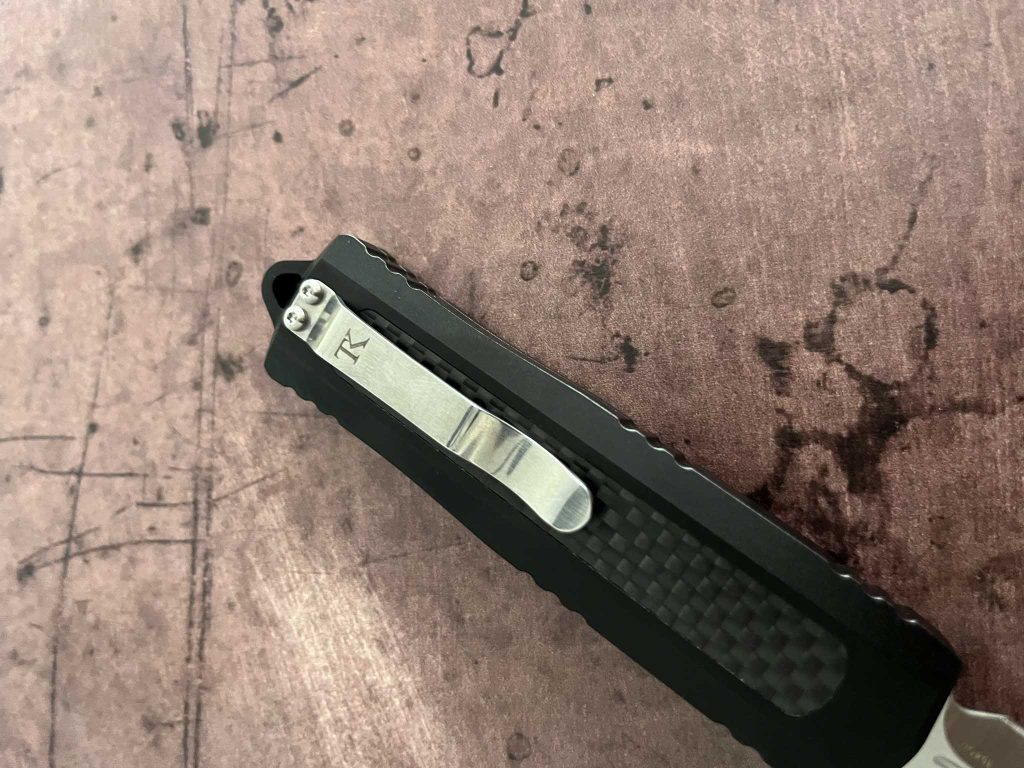
Why Is Aluminum a Great Handle Material
- By shengchou
Down the years, many metal workers have earned their place in history thanks to what they created with hammer and tongs, fire and forge. Consider Philip Simmons (who crafted award-winning decorative ironwork), John Fritz (who revolutionized rail production in 19th century America), and Jan Liwacz (who famously opposed the Nazis while incarcerated at Auschwitz by intentionally setting part of the death camp’s metal sign upside down and then forging it all together to prevent any alterations). Knife makers possess more than a mention in the annuals, too, with James Black’s lauded Bowie knife and Karl Elsener’s perennially popular Swiss Army knife. However, you rarely hear people praise knife makers for their knives’ handles, which we think is a missed opportunity. After all, not only do handles greatly contribute both to a knife’s functionality and aesthetics, it’s worth remembering that it’s the part of any knife that a user will interact with the most.
This article will discuss one of our most favorite handle materials: aluminum. By the end, we hope that you understand while we use it in all of our high-end OTFs.
Advantages to Aluminum Handles
Metal in general (and aluminum in particular) isn’t exactly a traditional handle material. The occupants of that category include things like wood, horn, bone, nacre, and the like. Metals aren’t as newfangled as the multitude of synthetics that have invaded the market, but they’re hardly the old standbys. Still, metal handles have become increasingly common on many different knife styles, and aluminum is one of the most popular. In this section, we’ll explain why.
Strong and Durable
If you want a truly tough knife handle that won’t bend, split, or chip even when used in really harsh or rough environments, then you should seriously consider aluminum. One of the biggest downsides to more traditional handle materials is that it’s relatively easy to damage them. Pressure can pulp wood, bone suffers from discoloration, and horn may very well snap off if accidentally struck. An aluminum handle, though, will emerge from all three scenarios unscathed.
Lightweight
Aluminum is far from the strongest metal that you could use for a knife handle. Stainless steel outclasses it in sturdiness — and also in terms of weight. Just like in real life, tipping the scales isn’t a positive when it comes to a knife. Sure, axes benefit from added heft, but knives aren’t typically used for chopping, and a a weighty handle will quickly tire the average user. Aluminum has roughly one-third of the weight of steel, which results in a handle that will feel substantial but won’t tire out a user.
Corrosion- and Water-Resistant
Swelling, rust, and other types of corrosion are hardly an issue when it comes to aluminum handles. Admittedly, uncoated aluminum will experience some discoloration over time, but it’s a trifling matter to polish it. Fortunately, most aluminum knife handles are intentionally oxidized, adonized, or specially plated for their protection. Even if they weren’t, though, the elements pose precious little risk to the aluminum parts of a knife, making them ideal for utility and survival scenarios.
Easily Modifiable Appearance
In the previous section, we briefly mentioned that many knives with aluminum handles feature various kinds of coatings for protection. What we didn’t mention was that these coatings also serve an aesthetic purpose. Aluminum handles can feature almost any kind of coloration or patterning. In fact, as we will see in a moment, ensuring that an aluminum handle has appropriate texturing is essential to ensuring that it works properly. But no matter what kind of panache you’d prefer for your blade to have, an aluminum handle can fill that niche.
Inexpensive
According to Georgia State University, the top three most abundant elements in the earth’s crust are oxygen (46.6 percent of the total by weight), silicon (27.7 percent) — and aluminum (8.1 percent). Iron, the element that we most commonly think about when it comes to knives, is a mere 5 percent. Other elements (such as titanium) may prove stronger and tougher than aluminum, but they come with a much higher price tag due to their relative rarity. When it comes to affordable excellence, aluminum is the best option.
Drawbacks to Aluminum Handles
As the great poet Bret Michaels famously noted, every rose truly does have its thorn, and despite its advantages, aluminum also possesses several noteworthy drawbacks as a knife-handle material. For example, plain aluminum is slippery in the hand, especially when your hand is wet from seat or the elements. Aluminum also is an excellent conductor, which means that it will transmit heat or cold to your grip, making it less than ideal for extreme temperatures. Finally, aluminum may be strong, but it doesn’t resist impacts well. An aluminum handle won’t easily deform, chip, or break, but it will pick up dents and dings if handled carelessly.
Of course, the solutions to these issues are quite easy to implement. Though aluminum may feel slippery in the hand, an ergonomically designed handle with appropriate texturing can completely eliminate any grip-related difficulties. (We would go so far as to say that you should never consider purchasing a knife with an untextured metal handle.) Trying to hold on to an aluminum handle in, say, the Yukon or Siberia could indeed be an unpleasant experience, although donning a glove would largely remedy it. Ditto for keeping your knife in a reasonably sturdy case so that any unintentional impacts don’t leave a permanent mark.
With its numerous advantages and easily manageable disadvantages, it’s no wonder that aluminum has become a go-to for luxury knife makers. Here at TAKCOM, we pride ourselves at creating high-end OTFs with reasonable price tags. We achieve this by designing our knives in-house, producing them in small batches, and rigorously testing them to ensure quality. And every one of our knives features an ergonomic, textured handle.